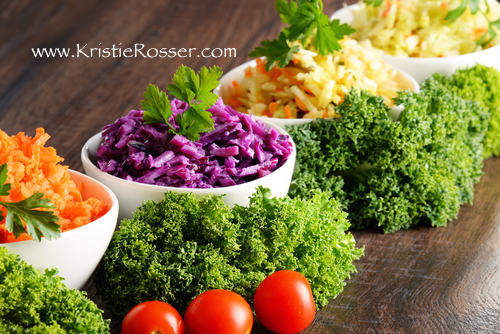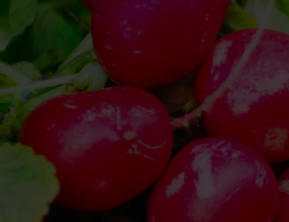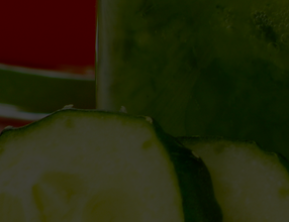 Fermentation is So Good For You!
Fermentation is So Good For You!
When I was younger, I avoided fermented foods like the plague.
The problem wasn’t just that they smelled funny, but also that I didn’t understand them–their purpose.
I mean, why did Grandma like to make and eat such stinky food? And why did she try to feed it to me?
Now that I understand fermentation, and why fermented foods are good for you, I have been adding fermented foods into my healthy lifestyle.
I have also gained a new-found (and sadly late) respect for the wisdom of my grandma.
Fermenting foods, and eating fermented foods, has been a practice that has been around for centuries–practically since the beginning of time.
Naturally fermented foods are full of helpful bacteria–probiotics.
Studies show that Americans have a high ratio of BAD bacteria in the guts, and a very low ratio of GOOD bacteria.
Our bowel systems should have a ration of 10 good to 1 bad bacteria, but the standard American gut (largely due to the Standard American Diet, stress, and antibiotic use) is just the opposite: 10 bad bacteria for every 1 good.
No wonder Americans have such alarming rates of IBS, constipation, diarrhea, and heartburn!
Our ancestors documented and reaped the benefits of fermented foods for centuries. Most people today include little to no traditional fermented foods in their daily diets. Some have never eaten fermented foods in their lifetime.
In fact, America is the only country where fermented foods, like sauferkraut and kimchi, are not a daily lifestyle practice, and we are paying the price with poor digestive health.
Fermented foods are a natural probiotic, and provide the body with healthy lactic acid. Eating a little bit of fermented food everyday helps your digestive system work better. It’s just that simple. I aim for 1/4 cup daily and enjoy my fermented foods in salads, as toppers for baked sweet potatoes, and as a condiment for flax crackers or flat herb bread.
You can ferment a variety of vegetables from beets, to carrots, to cabbage.
Play with lots of different vegetables, combinations of fermented foods, and recipes to find what your family likes.
Try my favorite basic recipe to start fermenting your foods and reap the digestive health benefits.
Here is another favorite recipe of mine, adapted from Pete Evans.
Kimchi
(Recipe adapted from Pete Evans)
Ingredients
- 3 c red cabbage
- 3 c cabbage
- 1 c white radish, diced
- 1 green apple, cored and julienned
- 1 red onion, thinly sliced
- 1 green onion, thinly sliced
- 1 handful coriander leaves (cilantro), chopped
- Juice of 1 lemon
- 1½ teaspoons himalayan pink sea salt
- 1 sachet vegetable starter culture
Preparation
You will need a 1.5 L preserving jar with an airlock lid for this recipe.
1. Wash the jar and all the utensils you will be using in very hot water. Dry well and set aside. Alternatively, run them through a hot rinse cycle in the dishwasher.
2. Remove the outer leaves of the cabbages. Choose an unblemished leaf, wash it well and set aside for later. Shred the cabbages in a food processor or slice with a knife or mandolin, then transfer to a large glass or stainless steel bowl. Add the daikon, apple, onion, shallot, coriander, lemon juice and salt and mix well. Cover and set aside.
3. Prepare the starter culture according to the directions on the packet. Add to the vegetables and mix thoroughly. Using a large spoon, fill the prepared jar with the vegetable mixture, pressing down to remove any air pockets and leaving 1 inch of room at the top. The vegetables should be completely submerged in the liquid. Add more water if necessary.
4. Take the clean cabbage leaf, fold it up and place it on top of the mixture, then add a small glass weight (a shot glass is ideal) to keep everything submerged. Close the lid, then wrap a tea towel around the side of the jar to block out the light.
5. Store the jar in a dark place at room temperature for 7 to 14 days. You can place the jar in a cooler to maintain a more consistent temperature. (Different vegetables have different culturing times and the warmer it is the shorter the time needed). The longer you leave it to ferment, the higher the level of good bacteria and the tangier the flavor.
6. Once the mixture has soured, place it in the fridge and Chill before eating. Once opened, the kimchi will last for up to 2 months in the fridge when kept submerged in liquid. If unopened, it will keep for up to 9 months in the fridge.
This the starter culture that I have used from Cultures for Health.
Live Life Optimally,
Kristie
 Kristie is a wife and mother of 4 and an athlete. She has been working in healthcare for more than 25 years. Kristie’s goal is to assist her patients to achieve and maintain an exceptional level of health and life-balance. She successfully blends prevention, optimization, hormone therapy, and age management with balanced and healthy living into her progressive wellness and integrative medical practice.
Kristie is a wife and mother of 4 and an athlete. She has been working in healthcare for more than 25 years. Kristie’s goal is to assist her patients to achieve and maintain an exceptional level of health and life-balance. She successfully blends prevention, optimization, hormone therapy, and age management with balanced and healthy living into her progressive wellness and integrative medical practice. 











Leave a Reply